What’s the difference between lab grown diamonds and cubic zirconia?
Key takeaway:
- Lab grown diamonds and cubic zirconia are both alternatives to natural diamonds.
- Lab grown diamonds have similar characteristics to natural diamonds, including durability, brilliance, and color.
- Cubic zirconia, on the other hand, is a synthetic material that resembles diamond but is less durable and less valuable.
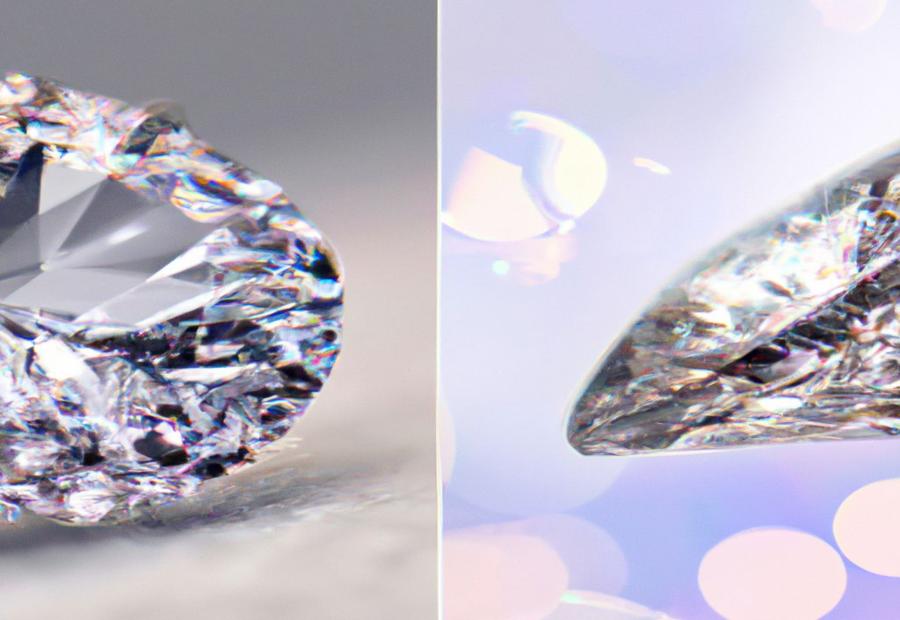
Photo Credits: Www.Lab-Grown-Diamond-Earrings.Com by Sean Nguyen
Discover the fascinating world of lab grown diamonds and cubic zirconia as we delve into their unique characteristics and distinctions. Uncover the science and artistry behind lab grown diamonds, created with advanced technology that emulates the natural diamond formation process. Alternatively, explore the allure of cubic zirconia, a stunning diamond simulant that offers affordability without compromising on brilliance. Prepare to unravel the intriguing contrasts between these two captivating gemstones in the following sections.
Lab Grown Diamonds
Lab Grown Diamonds possess the same physical and optical properties as natural diamonds, plus they’re graded using the same criteria – including the 4Cs: color, clarity, cut, and carat weight. Excitingly, you can get them in various shapes and sizes to suit individual preferences!
Plus, Lab Grown Diamonds are more affordable than natural diamonds, and free from any ethical issues connected to diamond mining. And, they have a minimal environmental impact compared to mining operations.
Furthermore, these lab-grown gems offer a consistent supply, meaning you can purchase high-quality diamonds without relying on limited natural resources.
With their exceptional durability and brilliance, Lab Grown Diamonds provide an attractive option for those seeking elegance and sustainability in their jewelry choices. Pro Tip: When purchasing Lab Grown Diamonds, look for reputable retailers who provide certifications from recognized grading laboratories to ensure the authenticity and quality of your stone.
Be dazzled by the sparkling differences between lab grown diamonds and cubic zirconia!
Cubic Zirconia
Cubic Zirconia is a synthetic gemstone. It looks and sparkles like a diamond. It’s popular, as it’s more accessible and affordable.
Let’s compare it to diamonds.
- Cubic Zirconia:
- Origin – Synthetic
- Hardness – 8
- Brilliance – High
- Color – Wide range
- Pricing – Affordable
- Sourcing – Artificial
Cubic Zirconia has unique pros. You have a wide range of colors to pick from, even rare ones. And it’s more budget-friendly than real or lab-grown diamonds.
It was first made by Soviet scientists in the late 1970s. The Lebedev Physical Institute in Moscow created it.
Characteristics of Lab Grown Diamonds

Photo Credits: Www.Lab-Grown-Diamond-Earrings.Com by Alexander Garcia
Lab grown diamonds are special – not like cubic zirconia. They have the same physical and chemical properties as natural diamonds; carbon atoms arranged in a crystal lattice. These give them the same hardness and brilliance.
Plus, their color and clarity can be similar to natural diamonds. Scientists use high pressure high temperature (HPHT) and chemical vapor deposition (CVD) to create diamonds in a lab and adjust the color and clarity. This offers a range of options from colorless to fancy colored stones.
The key characteristic of lab grown diamonds is their eco-friendly nature. They don’t require mining operations and so they are more sustainable and ethical than mined diamonds.
Lab grown diamonds are becoming more popular because they are affordable and align with people’s desire for sustainable and ethical products. As technology advances, lab grown diamonds will become harder to tell apart from natural diamonds, making them an even better choice.
Characteristics of Cubic Zirconia
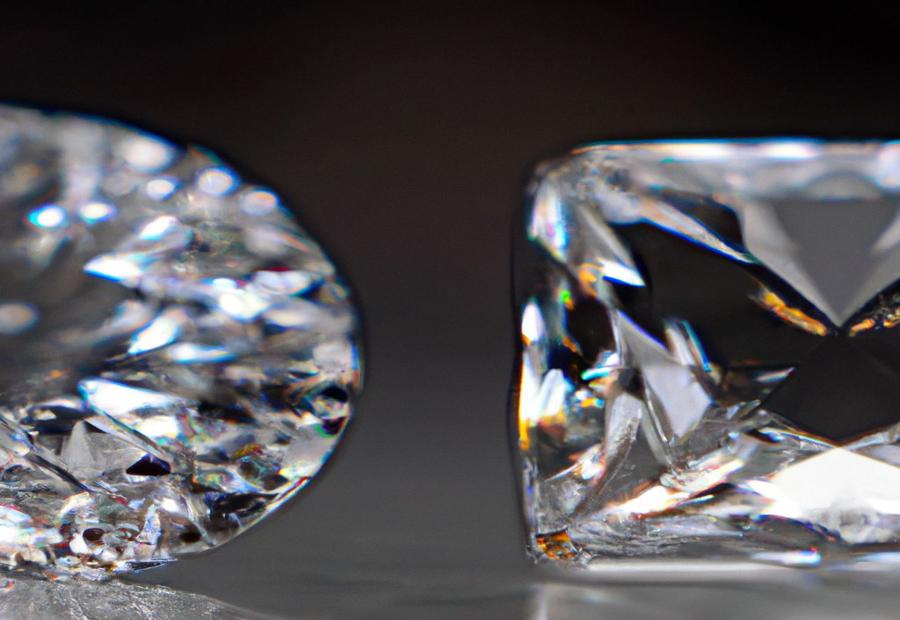
Photo Credits: Www.Lab-Grown-Diamond-Earrings.Com by Keith Harris
Cubic Zirconia is a synthetic gemstone that sets itself apart from other gemstones. It is very durable and hard, making it an ideal choice for those looking for a more long-lasting gemstone. It also has a remarkable brilliance and sparkle, almost identical to a diamond. It is also much more affordable, allowing for creative freedom with jewelry pieces. It can be cut and shaped into various sizes and styles. Plus, it is resistant to scratches and wear, making it a viable option for everyday use. Additionally, cubic zirconia comes in a wide range of colors, from colorless to vibrant hues.
A young couple on a tight budget was planning their engagement and they found that cubic zirconia was a brilliant and budget-friendly option. They were amazed by the exquisite sparkle and affordability of the gemstone, which allowed them to purchase a stunning engagement ring.
To conclude, cubic zirconia has many desirable characteristics that make it a reliable and attractive gemstone alternative. It has durability, brilliance, affordability, and versatility, captivating many jewelry enthusiasts.
Differences in Durability
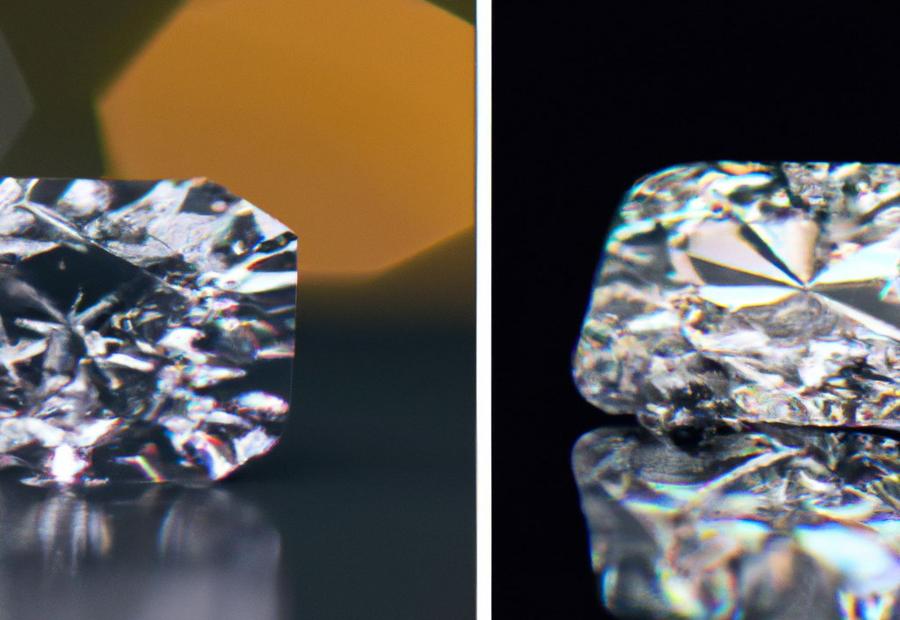
Photo Credits: Www.Lab-Grown-Diamond-Earrings.Com by Peter Clark
Lab grown diamonds and cubic zirconia differ greatly in terms of durability. Lab grown diamonds have exceptional hardness and strength, making them highly durable. These gems possess similar physical and chemical properties to natural diamonds, resulting in superb resistance to scratching and chipping. This makes lab grown diamonds suitable for everyday wear and ensures they last a long time.
Let us compare them in a table:
| Lab Grown Diamonds | Cubic Zirconia | |
|---|---|---|
| Durability | High | Low |
| Hardness | Exceptional | Moderate |
| Resistance | Scratching, Chipping | Susceptible |
Lab grown diamonds are more durable than cubic zirconia, thanks to their exceptional hardness and resistance to scratching and chipping. On the contrary, cubic zirconia has low durability and is vulnerable to scratching and chipping.
Though both lab grown diamonds and cubic zirconia may look similar, their differences in durability make them stand apart. Lab grown diamonds provide a more long-lasting option for jewelry, guaranteeing that its beauty and sparkle will remain for years. This makes it a better choice over cubic zirconia for various jewelry applications.
Differences in Brilliance
Lab grown diamonds and cubic zirconia have different levels of brilliance. Lab grown diamonds, also known as synthetic diamonds, are identical to natural diamonds chemically. Therefore, they both reflect and refract light in a similar way, creating a brilliant sparkle. Cubic zirconia, though similar to diamonds, is a synthesized material that does not possess the same properties. Thus, it does not provide the same level of brilliance.
To explain this further, let’s look at the physical characteristics. Lab grown diamonds have a higher refractive index which means they bend light more effectively, creating a greater dispersion of colors and increasing their brilliance. Cubic zirconia has a lower refractive index. This produces less light bending and reduced brilliance compared to lab grown diamonds. Also, the structure of lab grown diamonds allows for more organized and effective light dispersion, amplifying their brilliance.
The distinction between lab grown diamonds and cubic zirconia in brilliance is noticeable. This makes lab grown diamonds the preferred choice for those seeking outstanding brilliance and sparkle.
Differences in Color

Photo Credits: Www.Lab-Grown-Diamond-Earrings.Com by Dylan Robinson
Lab grown diamonds and cubic zirconia vary in color. Lab grown diamonds display a range similar to natural diamonds, while cubic zirconia stones show a more limited selection. Reference data implies lab grown diamonds can be made in various colors, such as yellow, green, and blue – dependent on the chemical elements used in the growth process. On the other hand, cubic zirconia tend to have a uniform look, usually appearing colorless or white. The color variation of lab grown diamonds makes them a more versatile choice for jewelry, offering a wider range of aesthetic choices.
Differences in Pricing
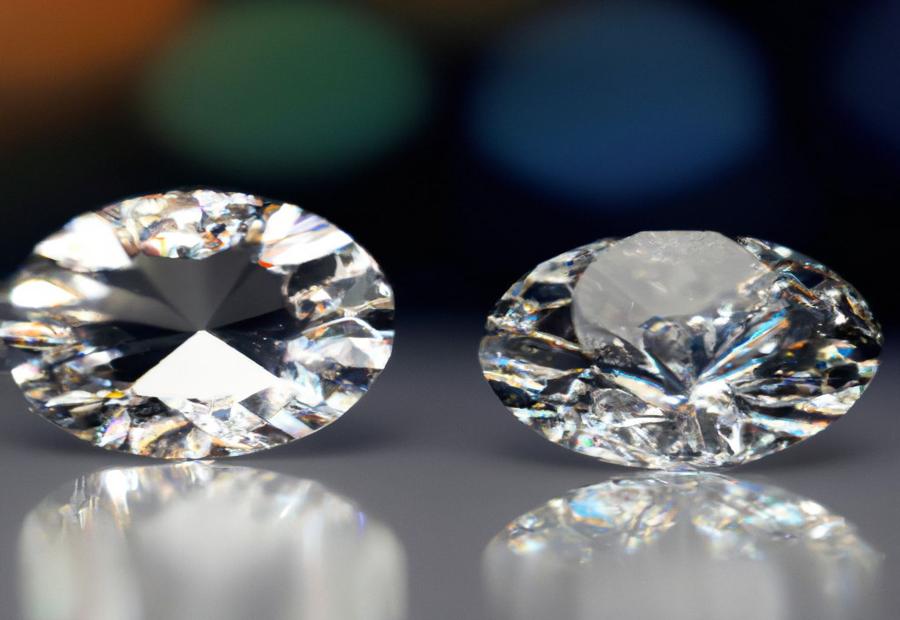
Photo Credits: Www.Lab-Grown-Diamond-Earrings.Com by Elijah Garcia
Lab grown diamonds and cubic zirconia differ greatly when it comes to pricing. Lab grown diamonds are pricier, whereas cubic zirconia is much more affordable. This disparity can be attributed to the two’s distinct compositions and production processes.
Lab grown diamonds are created in a laboratory using advanced technology. They are made of actual carbon atoms, like natural diamonds, and carry the same physical and chemical properties. The similarity to natural diamonds is the reason why lab grown diamonds are often priced close to their mined counterparts. But they are still relatively cheaper due to lesser mining and distribution costs.
On the other hand, cubic zirconia is a diamond simulant made from zirconium dioxide. It’s produced through a controlled manufacturing process involving heating zirconium dioxide to extreme temperatures. This fabrication method produces flawless gemstones with a high refractive index similar to that of diamonds. Cubic zirconia is a synthetic material and doesn’t need as much time and resources to manufacture, which is why it’s much cheaper compared to lab grown diamonds.
Differences in Sourcing
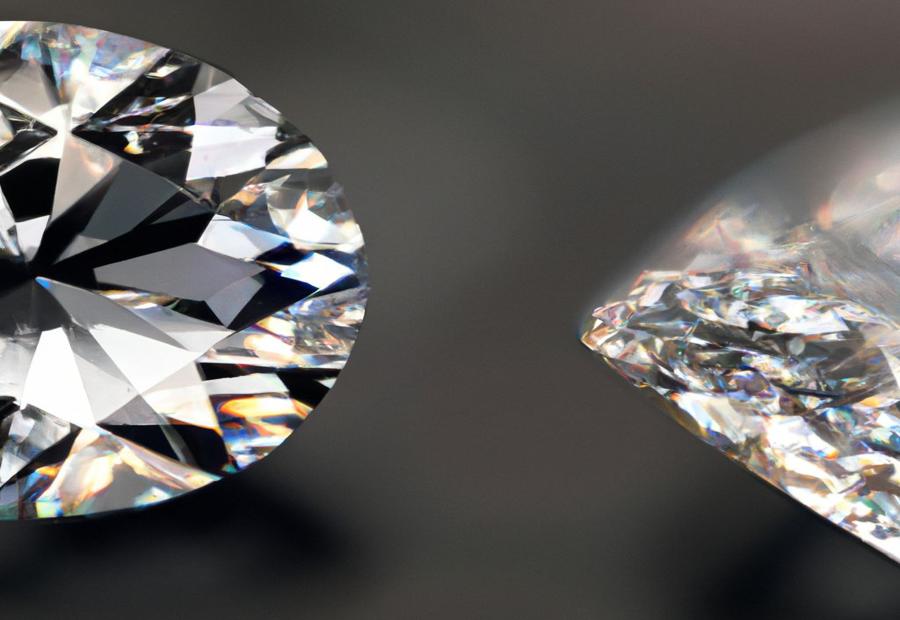
Photo Credits: Www.Lab-Grown-Diamond-Earrings.Com by Carl Flores
Lab grown diamonds and cubic zirconia have distinct differences in sourcing. Lab grown diamonds are made by replicating the natural diamond formation process in laboratories, using advanced technology. Whereas, cubic zirconia is a synthetic gemstone made from zirconium dioxide.
Let’s look at a table to compare:
| Diamond Type | Sourcing |
|---|---|
| Lab Grown Diamond | Created in laboratories using advanced technology to replicate the natural diamond formation process |
| Cubic Zirconia | Synthetic gemstone made from zirconium dioxide |
Lab grown diamonds are sourced by recreating conditions found deep in Earth’s crust. This involves high pressure and high temperature, or chemical vapor deposition. This results in gem-quality stones that are physically and chemically identical to mined diamonds. Cubic zirconia, however, is sourced by synthesizing zirconium dioxide, which is not related to diamonds.
Lab grown diamonds are more ethical and sustainable than mined diamonds. Since they are created in a controlled environment, there is no need for destructive mining practices, which harm the environment and involve unethical labor practices. In contrast, cubic zirconia has no such qualities.
Those seeking a sustainable and ethically sourced alternative to mined diamonds can opt for lab grown diamonds. But cubic zirconia is more budget-friendly. Ultimately, the choice depends on individual preferences and priorities.
Conclusion
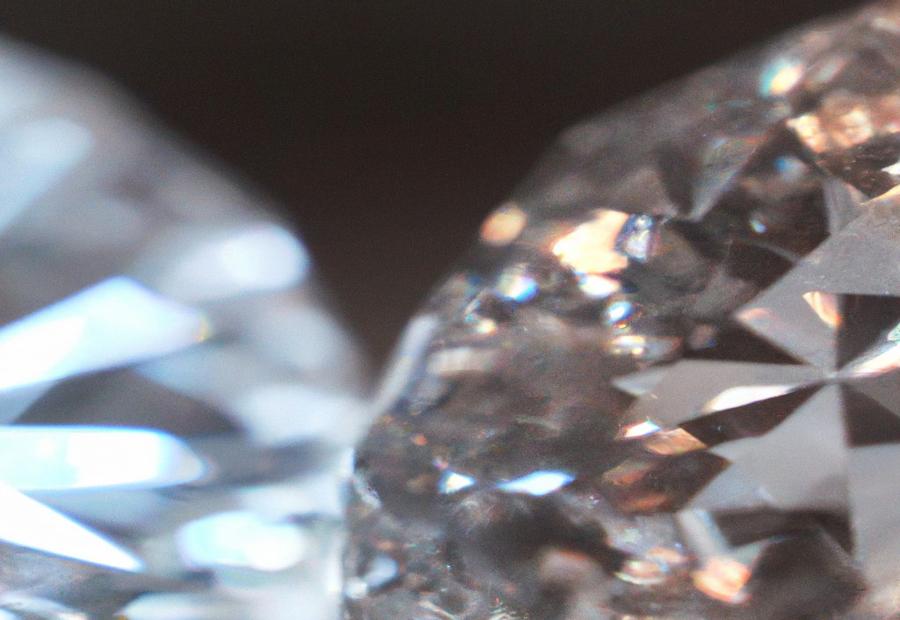
Photo Credits: Www.Lab-Grown-Diamond-Earrings.Com by Carl Flores
Lab grown diamonds and cubic zirconia are both alternatives to natural diamonds. Lab grown diamonds are made in a lab using high-pressure, high-temperature (HPHT) or chemical vapor deposition (CVD) processes. They are identical to natural diamonds. However, cubic zirconia is not a real diamond – it is made from zirconium dioxide. It looks similar to a diamond but lacks its durability and hardness. The price of lab grown diamonds is similar to natural diamonds. Cubic zirconia is much cheaper.
Lab grown diamonds and cubic zirconia provide people with options. Lab grown diamonds offer the same look and durability as natural diamonds, making them a popular choice for those seeking an ethical and sustainable alternative. High-tech processes are used to mimic the natural diamond growth process. Cubic zirconia is an affordable option but doesn’t have the same value as diamonds.
Lab grown diamonds have been recognised and accepted in the jewelry industry. They are considered a legitimate and valuable alternative to natural diamonds and look the same. Cubic zirconia has not gained the same recognition or value. So, lab grown diamonds are preferred over cubic zirconia.
Some Facts About the Difference Between Lab Grown Diamonds and Cubic Zirconia:
- ✅ Lab grown diamonds are considered real diamonds, while cubic zirconia stones have a different mineral structure. (Source: Luminesce Diamonds)
- ✅ Lab grown diamonds are made from a diamond seed and carbon, while cubic zirconia stones are made from zirconium dioxide. (Source: Luminesce Diamonds)
- ✅ Lab grown diamonds have the same characteristics as mined diamonds and can be identified as diamonds with specialized equipment, while cubic zirconia stones can be distinguished from diamonds without specialized equipment. (Source: Luminesce Diamonds)
- ✅ Lab grown diamonds are much harder than cubic zirconia stones and can cut through hard substances like concrete and glass, while cubic zirconia stones can become scratched or chipped. (Source: Luminesce Diamonds)
- ✅ Lab grown diamonds have a white light brilliance, while cubic zirconia stones have a rainbow color brilliance. (Source: Luminesce Diamonds)
FAQs about What’S The Difference Between Lab Grown Diamonds And Cubic Zirconia?
What’s the difference between lab grown diamonds and cubic zirconia?
Lab grown diamonds and cubic zirconia may look similar, but they have significant differences:
- Lab grown diamonds are created above ground using specialized technology and responsibly sourced diamond seeds, while cubic zirconia is a synthetic material made by melting zirconium oxide powder with stabilizers.
- Lab grown diamonds have the same chemical, physical, and optical characteristics as natural diamonds, whereas cubic zirconia does not possess the same properties as a real diamond.
- Lab grown diamonds score a perfect 10 on the Mohs Hardness Scale, while cubic zirconia ranks 8 to 8.5. Cubic zirconia can be scratched and foggy over time, while lab grown diamonds are more durable.
- Lab grown diamonds have superior brilliance and refractive qualities compared to cubic zirconia. Cubic zirconia gives off a “rainbow effect,” while lab grown diamonds have a spectacular shine, fire, and sparkle.
- Cubic zirconia is worth very little and has no market value, while lab grown diamonds can be obtained at a lower price compared to natural diamonds of similar quality and carat weight.
- Cubic zirconia is exclusively man-made, while lab grown diamonds are sourced from responsibly obtained diamond seeds using specialized technology.
How are lab grown diamonds different from natural diamond counterparts?
Lab grown diamonds and natural diamonds have the same chemical composition, physical properties, and optical characteristics. The main difference is their origin. Natural diamonds are formed deep within the earth’s crust over billions of years, while lab grown diamonds are created in dedicated facilities above ground using specialized technology and responsibly sourced diamond seeds.
Can a professional jeweler distinguish between lab grown diamonds and cubic zirconia?
Yes, a professional jeweler can distinguish between lab grown diamonds and cubic zirconia. They can use specialized equipment, such as magnifying glasses and other gemological tools, to identify the differences in physical appearance, optical characteristics, and mineral structure. The jeweler’s expertise and experience in the diamond industry also play a crucial role in accurately identifying the stones.
Are lab grown diamonds a more affordable alternative to natural diamonds?
Yes, lab grown diamonds can be obtained at a lower price compared to natural diamonds of similar quality and carat weight. This makes lab grown diamonds a more affordable option for those seeking the beauty and characteristics of diamonds without the higher cost associated with natural diamonds. However, it’s important to note that the price of lab grown diamonds can still vary depending on their quality and other factors.
How can you tell the difference between lab grown diamonds and cubic zirconia without specialized equipment?
There are several ways to differentiate lab grown diamonds from cubic zirconia without specialized equipment:
- The fog test: Diamonds won’t fog up with breath or steam, while cubic zirconia stones will.
- The light test: Diamonds refract a neutral light, while cubic zirconia stones refract more color.
- Examine flaws: Diamonds often have imperfections called inclusions, while cubic zirconia stones usually don’t.
- The water test: Diamonds sink quickly in water due to their density, while cubic zirconia stones sink slower.
How are lab created diamonds made?
Lab created diamonds are made by utilizing a complex process that involves the use of responsibly sourced diamond seeds and pure crystallized carbon. These diamond seeds are placed in a growth chamber and subjected to conditions that mimic the natural diamond formation process. Over time, carbon atoms are deposited onto the diamond seeds, resulting in the growth of pure lab grown diamonds with identical chemical, physical, and optical characteristics as natural diamonds.

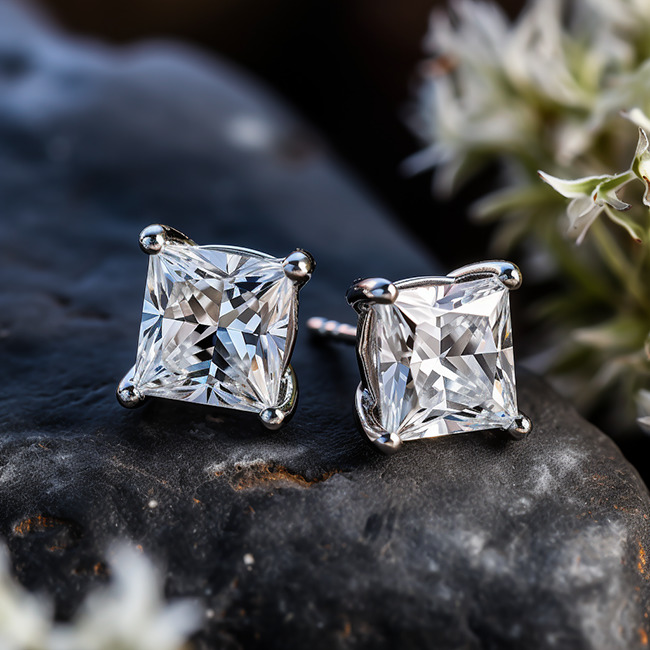
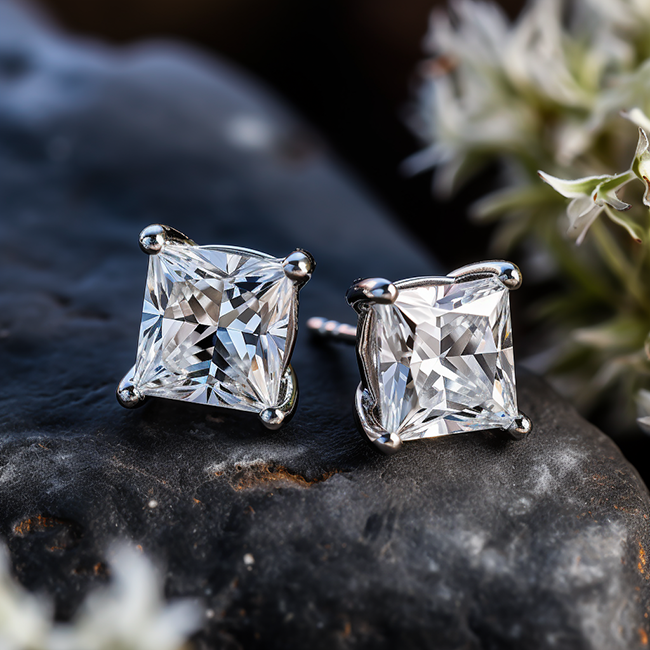
Leave a Reply